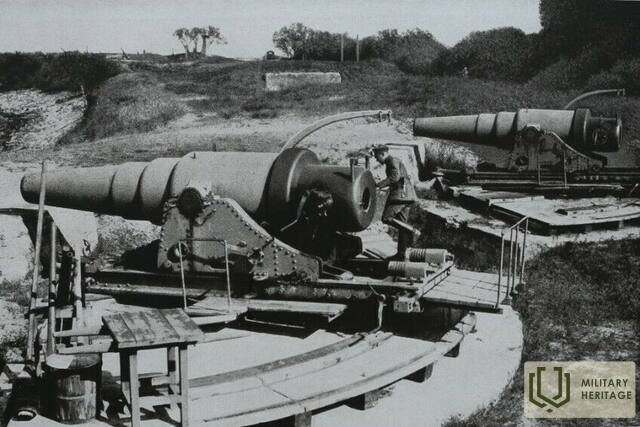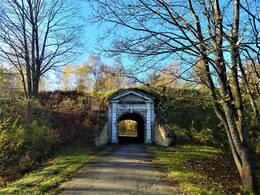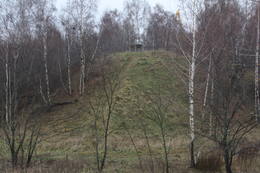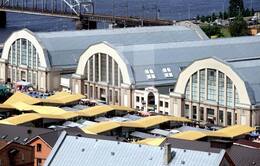Apie Daugavgryvos tvirtovę
Pasakotojas aprašo įvykį Daugavgryvos tvirtovėje Pirmojo pasaulinio karo metu, kai ją subombardavo vokiečių armijos dirižablis. Tvirtovė buvo vienas iš strateginių objektų, išlaikiusių savo svarbą iki Antrojo pasaulinio karo pabaigos.
„(..) 1916 metų pavasarį, naktį iš trečios į ketvirtą Velykų dienos, virš apgulto Rygos rajono nuolat skraidė vokiečių „cepelinas“, kuris netikėtai atskrido virš tvirtovės. Lauko sargyba prie tilto per Hapako upę jį pamatė pačią paskutinę akimirką. Pagyvenęs Vologdos būrio kareivis, pats palaikęs jį „blogiečiu“, iš baimės ir susijaudinimo pamiršo pranešti sargybos viršininkui ir laiku sukelti aliarmą, tačiau atsipeikėjo tik tada, kai už šimto ar šimto penkiasdešimties žingsnių nuo posto A. Baložo ir P. Bērzinio medienos fabrikų medžiagų aikštelėse pradėjo sprogti pirmosios bombos, spėjama, paleistos į tiltą, sudaužydamos ir sunaikindamos kai kurias sūnų ir blankų arklides. Švietė ryški mėnulio šviesa. Dauguvos įlankas ir aplinkines pievas dengė lengvas rūkas. Laikrodis jau rodė po vidurnakčio, kai pirmieji bombų sprogimai sutrikdė tvirtovę ir apylinkių gyventojus. Po kelių minučių tvirtovės prožektoriai pradėjo šviesti... darbo metu prie bombų sprogimų prisijungė patrankų šūvių ir sprogstančių skeveldrų triukšmas, kurio poveikį dar labiau sustiprino bendra nakties tyla ir aidas tvirtovės pylimuose. Po dešimties ar penkiolikos minučių viskas nurimo, vis dar buvo girdėti dirbant tik Ķemeri rajono baterijas, kurios, tikėtina, lydėjo išvykstantį „Cepeliną“. Kitą rytą atidžiau apžiūrėjus mūšio lauką ir padarytą žalą, paaiškėjo, kad pastaroji buvo nereikšminga. Be jau minėtų išjudintų ir sudaužytų lentų bei tuščių arklidžių, uosto užtvankos geležinkelis buvo sunaikintas keliomis ašimis, pati uosto užtvanka taip pat buvo apgadinta ir tai buvo viskas, tačiau dvi nesprogusios „Cepelino“ bombos krisdamos įsmigo į žemę ir ten liko gulėti. Bombos reikėjo ištraukti iš žemės ir sunaikinti, nes paliktos likimo valiai, jos bet kurią akimirką galėjo sprogti ir sukelti didelę žalą bei nelaimę, ypač ta, kuri gulėjo Bolderājoje. (..)“
Atsiminimai buvo išspausdinti laikraštyje „Latvių šaulys“, Nr. 4, 1925 m. Atsiminimų pavadinimas – „Štai ir aną iš šaulių gyvenimo Daugavgryvoje“.
Susijusi laiko juosta
Susijusios temos
Susijusios vietos
Daugavgryvos tvirtovė
Daugavgryvos tvirtovė (įėjimas iš Birzės gatvės) yra Daugavgryvos saloje, kur Bulupės upė įteka į Dauguvos upę. Tvirtovė buvo pastatyta XVII a., siekiant apsiginti nuo priešų, judančių Rygos kryptimi, kuri buvo svarbus administracinis, prekybos ir gamybos centras. Vėliau ji tapo pagrindiniu Latvijos armijos pakrantės gynybos įtvirtinimu su keliais atramos taškais. Ši gynybinė įtvirtinimų sistema yra vienas vertingiausių Latvijos karinio paveldo objektų. Ši tvirtovė yra Latvijos karinės istorijos liudininkė. Pavyzdžiui, Krymo karo metu (1853–1856 m.) čia buvo mokomos Latvijos ir Estijos patrankinių valčių įgulos. Pagrindinis šių dalinių tikslas buvo ginti vietos uostus ir pakrantę nuo britų karinio jūrų laivyno atakų. Pirmojo pasaulinio karo metu čia buvo suformuotos Daugavgryvos milicijos kuopos. Tai buvo pirmieji Latvijos koviniai daliniai, atsiradę dar anksčiau nei Latvijos šauliai. Šiandien galima pamatyti tvirtovės teritoriją. Netoliese yra Kometfortas ir Pajūrio gamtos parkas, o kitoje Dauguvos pusėje – Mangaļsalos įtvirtinimai.
Rygos centrinio turgaus cepelinų angarai
Įsikūręs Rygos centre, priešais Rygos tarptautinę autobusų stotį, netoli Rygos geležinkelio keleivių stoties.
Rygos centrinis turgus yra didžiausias turgus Latvijoje, kadaise laikytas geriausiu ir moderniausiu turgumi Europoje. Ryškiausias jo simbolis – 1920-aisiais pastatyti turgaus paviljonai, kurie iš pradžių buvo naudojami kariniams tikslams.
Pirmojo pasaulinio karo metu Vokietijos armija Kuržemėje įkūrė Vainodės oro uostą, kuriame nuolat buvo dislokuoti keli dirižabliai. Tai buvo pailgi balionai, pripildyti dujų, su prie korpusų pritvirtintomis patalpomis keleiviams ir kroviniams gabenti. Valdymą užtikrino vidaus degimo arba elektrinis variklis ir sparnas korpuse. Dirižabliai buvo skirti žvalgybai arba priešo bombardavimui, pavyzdžiui, jie vykdė ataką prieš Rusijos armijos hidroplanų aerodromą netoli Ronių salos. Yra žinoma, kad angarai buvo vadinami „Walhalla“ ir „Walther“.
Po Latvijos nepriklausomybės karo angarai buvo išardyti ir panaudoti Rygos centrinio turgaus angarų statybai, ketinant palikti juos originaliuose matmenyse. Vėliau buvo nuspręsta naudoti tik viršutines angarų dalis.
Šiandien galite apžiūrėti Vokietijos armijos dirižablių angaro metalines konstrukcijas. Turgus leidžia maloniai susipažinti su pasaulinės aviacijos pradžios įrodymais. Ekskursijų užsakymas: +37167358157; gints.aksiks@rct.lv.








